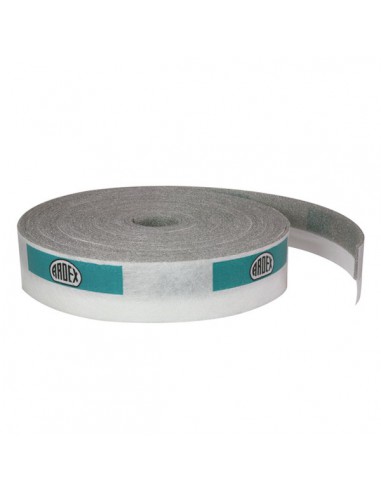Product description
Self-adhesive foam strip to prevent the sonic bridging effect when levelling substrates or installing tiles, natural stone or concrete slabs.
Perimeter strip to ensure ventilation and prevent sound bridging during levelling work on wooden substructures.
Prevents sound bridges and over-tightened installations when installing decoupling or sound insulation foils.
Easy to install even in corners.
Technical data
- Width : Approx. 50 mm
- Thickness: Approx. 5 mm.
- Water vapour permeable: Yes
- Moisture resistant: Yes
- Colour: Grey
- Packaging: 4 rolls of 25 metres per box
- Storage: Approx. 12 months in a dry place in its original sealed packaging.
Field of application:
Indoors and outdoors.
Allows safe connection joints between floors and walls in levelling or smoothing work with self-levelling or semi-dry mortars, prior to the installation of ceramic tiles, natural stone, wood, .....
Allows for expansion/contraction movements of the screed e.g. due to temperature changes. Avoids acoustic bridging effects between the substrate and the finish.
Description:
ARDEX TP 50 consists of a strip of rot-proof polyethylene foam and a strip of self-adhesive fabric to adhere to the substrate.
Substrate preparation:
The substrate must be dry, firm, load-bearing and free of dust and agents that hinder adhesion. Possible protrusions and sharp elements present on the substrate must be removed to allow full contact of the self-adhesive tape.
If necessary the substrate shall be primed with the appropriate primer from the ARDEX product range.
Application:
ARDEX TP 50 is cut to the required length in each case after removal from the packaging.
The protective foil is removed from the back of the textile area of the tape and pressed firmly onto the substrate.
Avoid tension in the tape.
At the corners, both the foam and the fabric can be cut to fit the shape of the corners.
ARDEX TP50 can also be laid end-to-end, in which case the joint is covered with a self-adhesive tape, e.g. tesakrepp®.
Please note :
The perimeter strip can be cut with a cutter once the self-levelling compound or the self-levelling
the self-levelling compound or screed has cured. When laying ceramic or natural stone, the strip is cut after the grout has cured.















